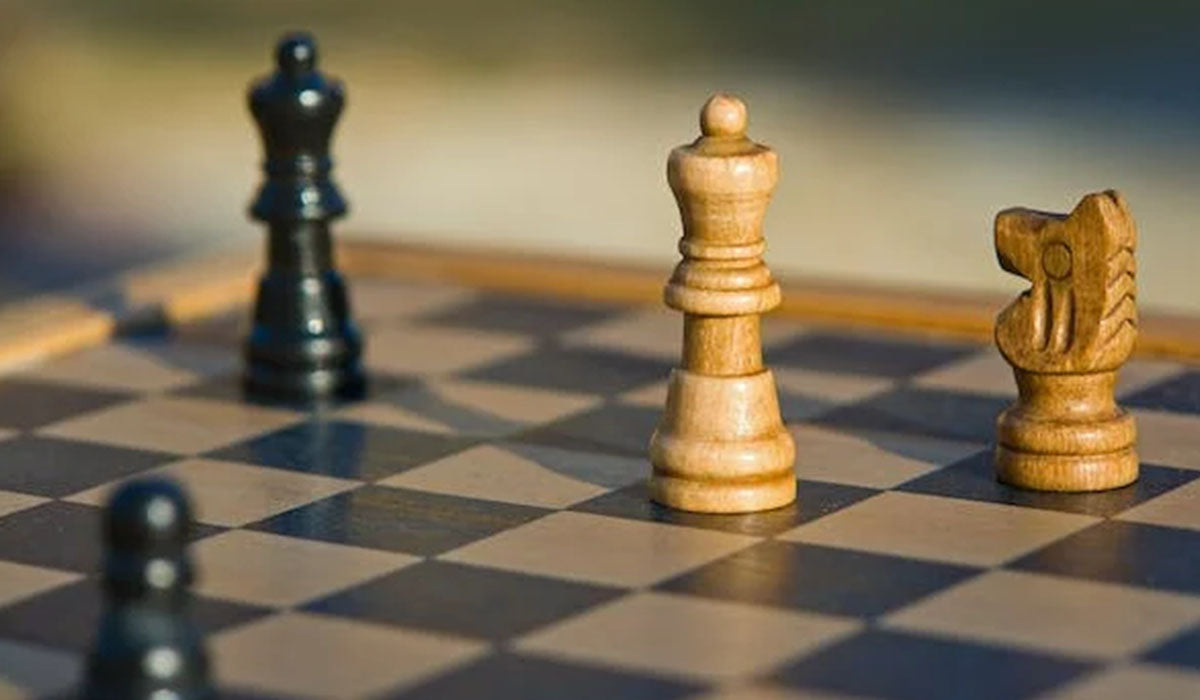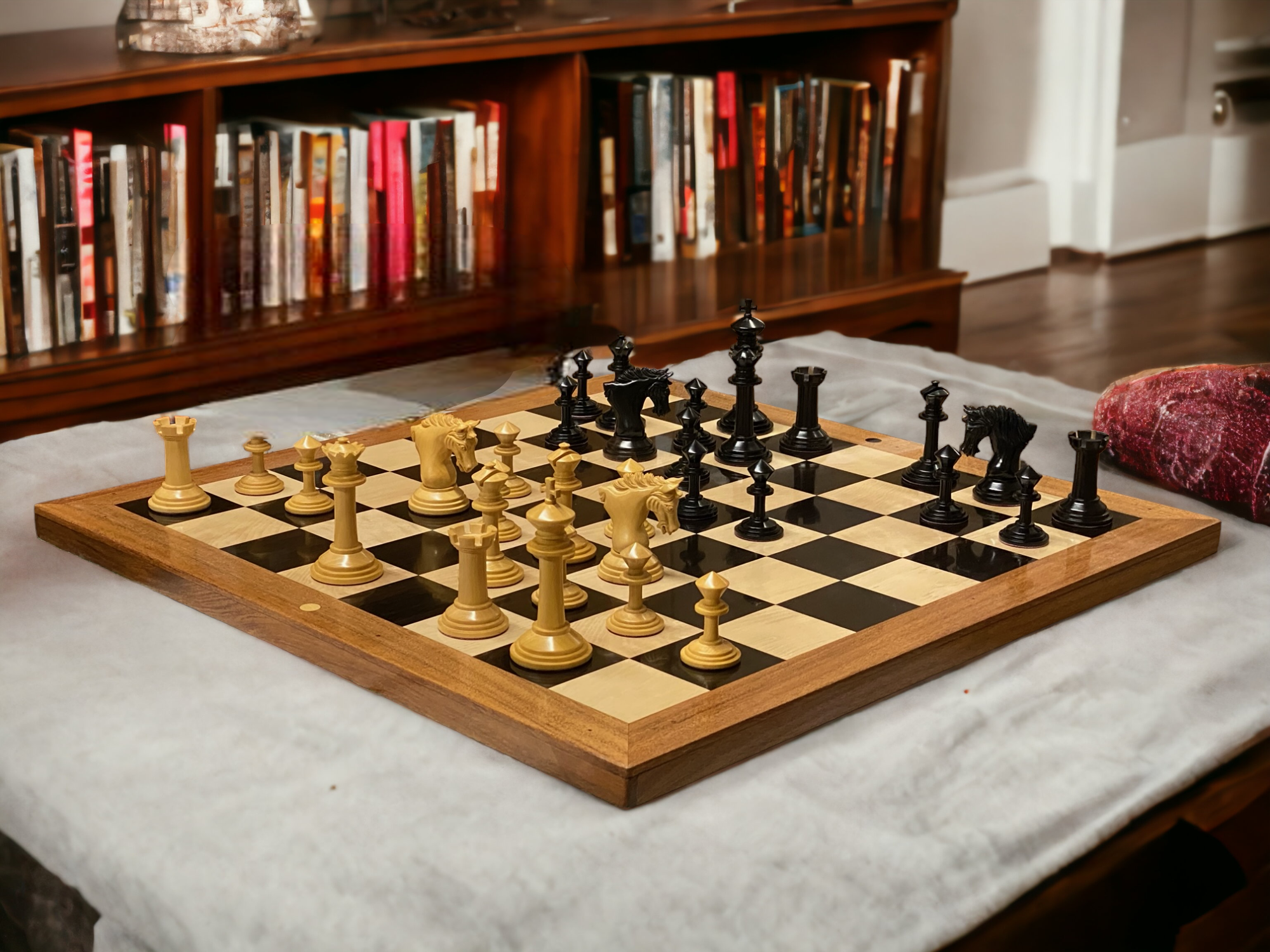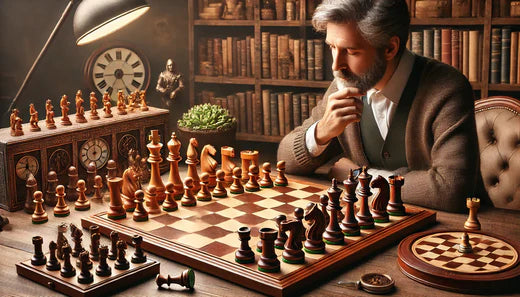Decoding Chess:
The game of chess, a timeless and intellectually stimulating pursuit, unfolds on a distinctive 8x8 grid known as the chess board. While the focus is often on the strategic movements of the pieces, there's an intriguing aspect that draws attention—the number of squares on the chess board. In this exploration, we unravel the mysteries surrounding this seemingly simple question and delve into the various types of squares that contribute to the overall composition of a chess board.
The Foundation: Understanding the Chess Board:
Before delving into the intricate world of squares, it's essential to grasp the fundamental structure of the chess board. A standard chess board consists of 64 squares arranged in an 8x8 grid. Each player faces the board with a light-colored square on their right-hand side, setting the stage for a strategic battle where the interplay of light and dark squares becomes a crucial element.
Calculating the Total Number of Squares:
Now, let's embark on the journey to determine the total number of squares on a chess board. The process involves recognizing the different sizes of squares within the board and summing them up.
-
Large Squares (8x8):
The primary squares on the chess board are the large 8x8 squares that cover the entire surface. There are 64 of these squares, each accommodating a single chess piece at a time.
-
Medium Squares (7x7, 6x6, and so on):
Moving beyond the standard 8x8 squares, we encounter smaller squares formed by reducing the size incrementally. There are (7x7) + (6x6) + ... + (1x1) of these squares. Each reduction in size creates a new set of squares nested within the larger ones.
-
Smaller Squares (2x2, 3x3, and 4x4):
Expanding our exploration, we can further investigate smaller squares that may not be initially apparent. These include (2x2), (3x3), and (4x4) squares, each contributing to the intricate layout of the chess board.
-
Total Number of Squares:
Adding up the large squares, the various sizes of medium squares, and the additional smaller squares brings us to the comprehensive total number of squares on a chess board. The mathematical expression for this summation involves a series that can be calculated to arrive at the answer.
Understanding the diverse sizes of squares, from the prominent 8x8 to the diminutive 1x1, provides a nuanced perspective on the chess board's complexity. Each size contributes uniquely to the overall structure, influencing strategic considerations and gameplay dynamics. As players navigate the chess board, these varying square dimensions add layers of depth to the tactical decisions made during the course of a game.
Types of Squares on a Chess Board:
Beyond the numerical count, exploring the types of squares enriches our understanding of the chess board's intricacies.
-
Light Squares:
The light squares, often depicted in white or a pale color, create a distinctive visual contrast with the dark squares. The alternating pattern of light and dark squares is a hallmark of traditional chess boards, enhancing both aesthetics and functionality.
-
Dark Squares:
Complementing the light squares, the dark squares contribute to the visual appeal of the chess board. Together, they form a symmetrical pattern that facilitates movement and strategic planning during gameplay.
-
Center Squares:
The four central squares on the chess board—d4, d5, e4, and e5—are often considered crucial territory. Controlling these squares is strategically significant, as it influences the overall dominance of the board.
-
Corner Squares:
The corners of the chess board—h1, h8, a1, and a8—are unique and hold strategic importance. Placing rooks in the corners allows for open files and ranks, impacting the early and late phases of the game.
-
Edge Squares:
The squares along the edges of the board present a distinct set of challenges and opportunities. They are often utilized for pawn structures and can influence the flow of the game.
Significance in Chess Strategy:
Understanding the number and types of squares on a chess board is more than a mathematical exercise; it has direct implications for strategic gameplay.
Control and Dominance:
In the intricate dance of chess, control over key squares is a strategic imperative. Players strategically position their pieces, especially focusing on central squares like d4, d5, e4, and e5. Establishing dominance over these crucial territories limits the opponent's options and sets the stage for a favorable position. The central squares act as focal points for launching attacks, controlling the board's center, and influencing the overall flow of the game.
Pawn Structures:
The arrangement of pawns on specific squares creates distinct pawn structures, shaping the dynamics of the game. Different pawn formations dictate the pace of play, influencing whether the game unfolds as a closed, open, or semi-open position. Savvy players leverage pawn structures to control key squares, fortify their position, and create potential weaknesses in their opponent's camp.
Opening Strategies:
Chess openings are strategic maneuvers aimed at establishing an advantageous position from the outset. Knowledge of square control is fundamental to effective opening play. Players strategically place their pieces to control specific squares, ensuring a harmonious development that aligns with their overall game plan. The opening sets the tone for the mid-game and endgame, making precise square control a critical aspect of strategic mastery.
Tactics and Maneuvers:
Tactical prowess in chess often hinges on the control or occupation of specific squares. Tactical maneuvers, such as forks and pins, exploit vulnerabilities created by inadequate square control. Understanding square dynamics is crucial for executing these tactical maneuvers successfully. By recognizing weak squares in the opponent's position, players can launch tactical strikes that disrupt the harmony of their adversary's setup.
The question of how many squares are on a chess board unveils a fascinating exploration into the nuances of this timeless game. Beyond the numerical count, the types and strategic significance of squares enrich the chess-playing experience.



